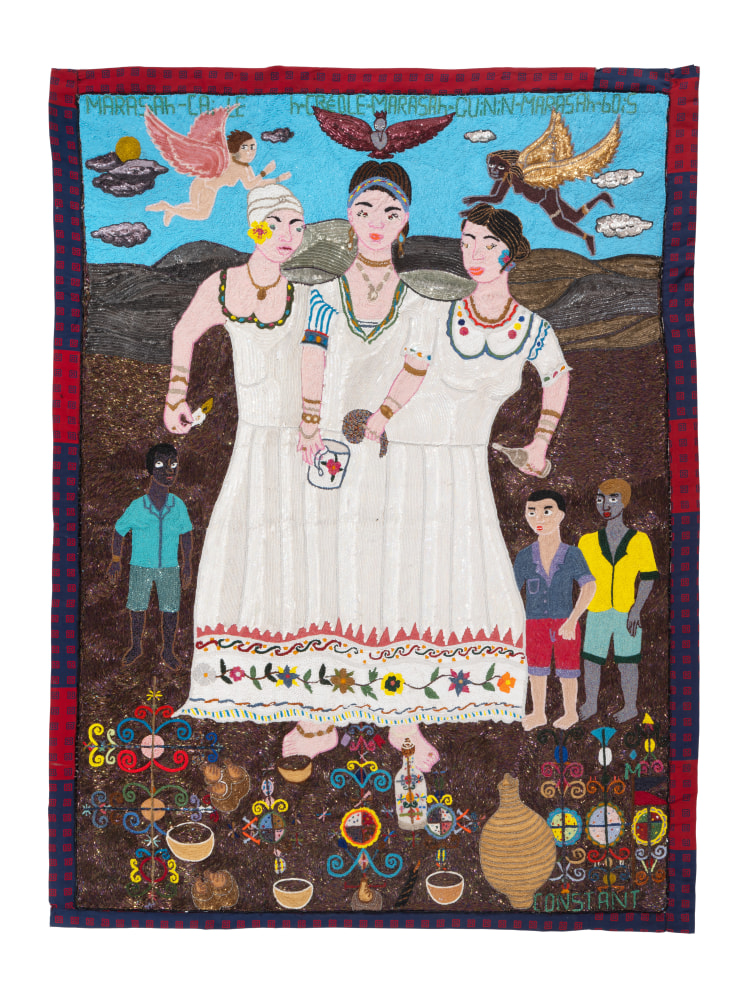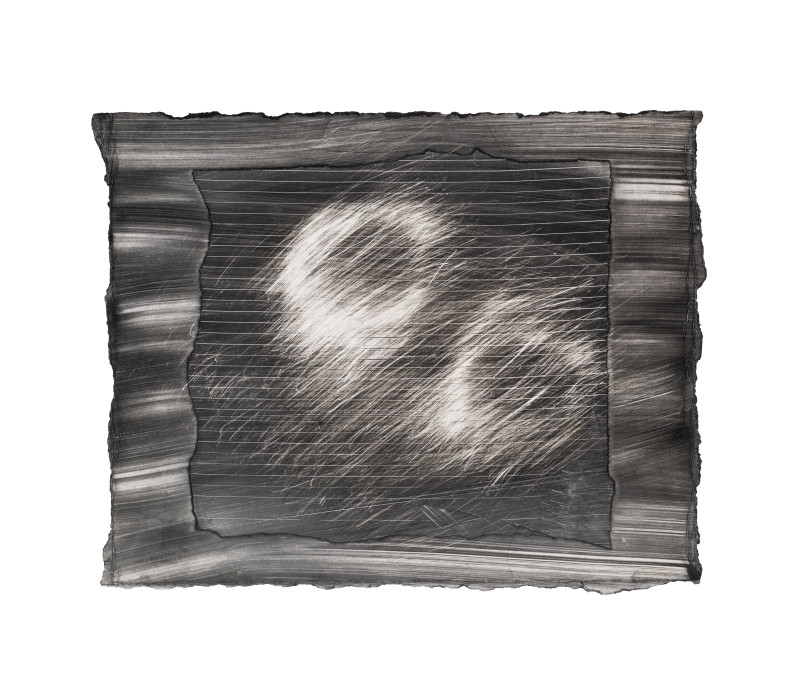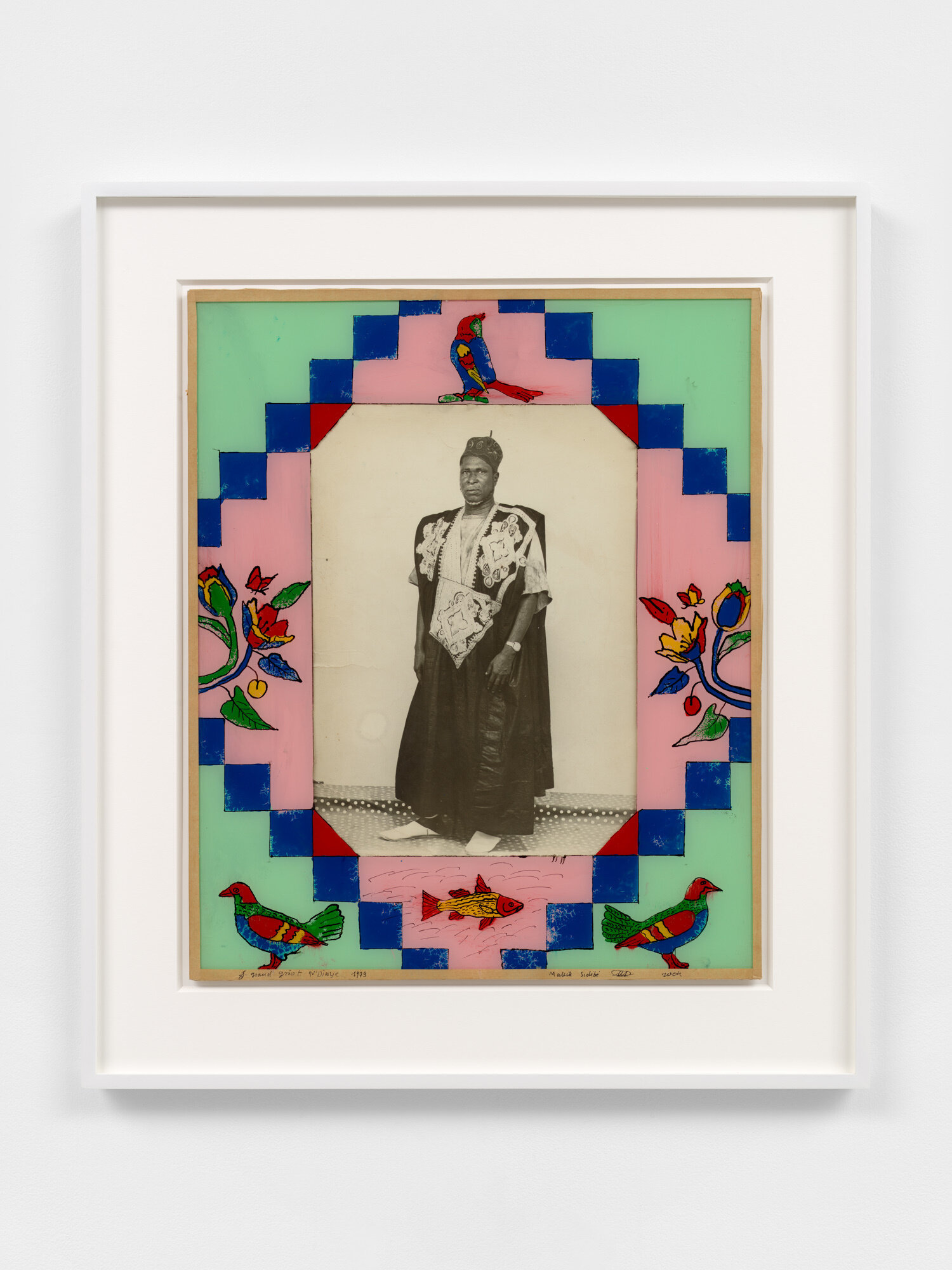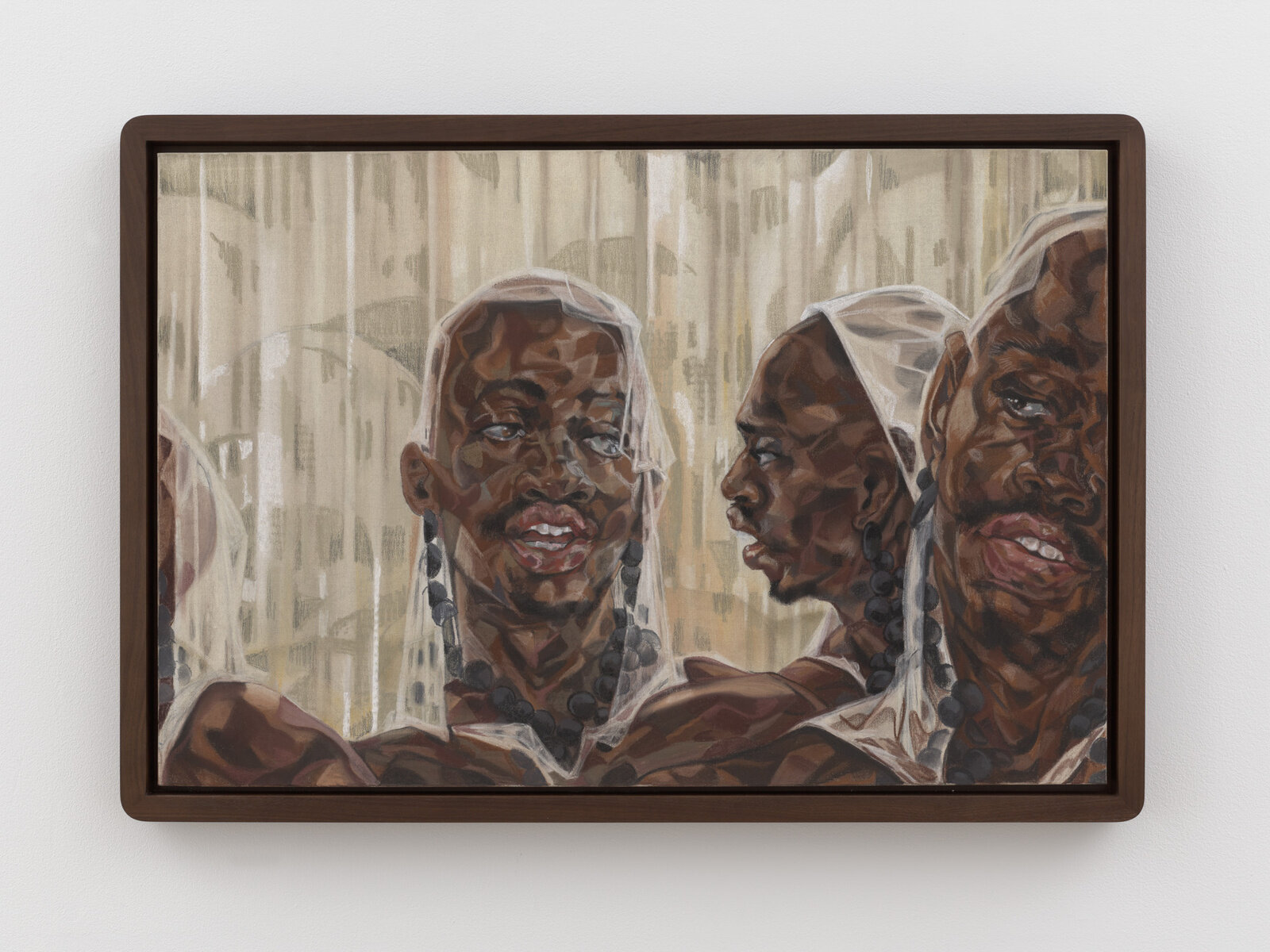

The Roof Garden Commission: Lauren Halsey
The Roof Garden Commission: Lauren Halsey, created a personal monument to Black lives and urban energy. Using 750 glass-fiber-reinforced concrete tiles, Halsey constructed a 22-foot-tall structure that resembles an Egyptian-style temple. Four large-scale sphinx statues with faces that are portraits of Halsey’s immediate family and her life partner stand as guardians, through which visitors can walk. The Metropolitan Museum of Art, 1000 Fifth Avenue , 82nd Street New York, NY. Runs through Oct. 22, 2023.
New York City, NY
North America


Projects: Tadáskía
"The exhibition, presented in collaboration with the Studio Museum in Harlem, will be the artist’s first solo presentation in the United States, and features MoMA’s recently acquired work alongside a monumental wall drawing and sculptures made in response to the site at MoMA. Projects: Tadáskía is organized by Thelma Golden, Director and Chief Curator, the Studio Museum in Harlem, and Ana Torok, the Sue and Eugene Mercy Jr.
Assistant Curator, Department of Drawings and Prints, MoMA, with the assistance of Kiki Teshome, Curatorial Assistant, the Studio Museum in Harlem." - Excerpt from Press Release.
New York City, NY
North America


In Jubilant Pastures
"Miles McEnery Gallery is pleased to announce In Jubilant Pastures, an exhibition of new paintings by Detroit-based artist Conrad Egyir, on view 5 September through 26 October. Accompanying the exhibition is a fully illustrated publication featuring an essay by Charles Moore.
In Jubilant Pastures, Conrad Egyir’s first solo exhibition with Miles McEnery Gallery, presents a body of eleven paintings that interrogate themes of identity and belongingness. Born in Ghana, Egyir’s exploration of self and others shines through, questioning what it means to assimilate to a new land while maintaining one’s roots. The deeply iconographic work combines religious symbols, Ghanaian visual lexicon, migration ephemera, and nods to Black contemporary and historical artists." -Press
New York City, NY
North America

The Brooklyn Artists Exhibition
"Spotlighting artists who have lived or maintained a studio in Brooklyn during the last five years (2019–24), The Brooklyn Artists Exhibition honors the borough’s dynamic present, storied past, and bright future. Selected by a committee led by esteemed artists Jeffrey Gibson, Vik Muniz, Mickalene Thomas, and Fred Tomaselli, participants represent a full range of disciplines, from drawing and painting to sculpture, video, installation, and beyond. Their creations tackle themes that resonate on both local and global levels—migration and memory, identity and history, uncertainty and turbulence, healing and joy. Together these works capture the vibrancy of both Brooklyn and its artists, who are bound by deep-rooted connections and a shared love of this singular place." -Press
New York City, NY
North America


The Mythic Age
"Transformation is the central tenet of Naudline Pierre’s practice: evolution of the self, metamorphosis of the female form, escape from our earthly existence into the luminous unknown, and material oscillations from fresco-like dry brushing to aqueous gestures. Pierre paints scenes that are ever-shifting, in states of mystery and ecstatic potentiality. Her characters’ limbs and wings extend beyond the picture plane, as if to suggest that this atmospheric world, devoid of a horizon line, continues infinitely.
Pierre transforms and reinvigorates disparate art historical references that span centuries, pointedly looking back to artists who did not and could not imagine her as their viewer, yet share a desire to reinvent and reimagine the universe. In her newest works, Pierre references Baroque and French academic painting of the 1800s, which opened the door to modernity and the heretical embrace of iconography in the service of personal, political, and radical self-expression. She draws freely from this distinctly male, European legacy of image-making, forming an intergenerational line between artists of radically different backgrounds to refashion historical motifs for a new audience."
New York City, NY
North America


Amy Sherald: American Sublime @ the Whitney Museum of Art
"American Sublime, Sherald’s first solo exhibition at a New York museum, considers the powerful impact of her paintings on contemporary art and culture while positioning her squarely within the art historical tradition of American realism and figuration. In her intentional privileging of Black Americans as her subjects, she extends that tradition to include a population who has historically been omitted from portraiture and representation. Sherald has described her paintings of everyday people as a more expansive vision of interiority and selfhood." -Whitney Museum of Art (2024)
New York City, NY
North America


An Abstraction
"In An Abstraction", the artist’s 12 paintings and 13 drawings will hang within a monumental, site-specific architecture consisting of five black triangular forms. These sculptural walls will reorder the gallery into new, unexpected spaces and extend the visual language of the exhibited works.
Bringing together the artist’s Black Dada and Untitled (Days) bodies of work, the new paintings and drawings in the exhibition feature a variety of marks—spray painting, stenciled geometric forms, and expressionistic brushstrokes—
to blur distinctions between painting, drawing, and photography and propose painting as a documentary and performative act. Pendleton’s new Black Dada works imbue his iconic black and white compositions with focused and saturated colors. Each of the paintings and drawings in this body of work bears one or more typographic letters from the phrase
“BLACK DADA,” rendered in a sans serif font amid the artist’s gestural marks. Continually transposing and overwriting these two modes of inscription, Pendleton cultivates a living library of his own ever-evolving gestures
and processes." -Press Release Excerpt
New York City, NY
North America


Rashid Johnson: A Poem for Deep Thinkers
Titled after a poem by Amiri Baraka, "A Poem for Deep Thinkers" showcases Rashid Johnson's expansive body of work that interrogates cultural narratives and personal histories. The exhibition features nearly 90 pieces, including large-scale installations, paintings, and sculptures, many of which utilize materials rich in cultural significance, such as shea butter and black soap. Johnson's art navigates themes of identity, race, and history, offering a profound commentary on the African American experience.
New York City, NY
North America


Ghost Images
In "Ghost Images," Mitchell returns to his Southern roots, capturing the ethereal beauty and complex histories of Georgia's Jekyll and Cumberland Islands. Through images of serene beaches, weathered ruins, and veiled figures, he explores the lingering presence of the past in contemporary landscapes. Mitchell's innovative techniques, including printing on mirrors and fabric, challenge traditional perceptions of photography, inviting viewers to reflect on the layers of history and memory embedded within each scene.
New York City, NY
North America


Bodies of Water: Black Geographies and Maternal Legacies
In Bodies of Water: Black Geographies and Maternal Legacies, Debra Cartwright employs fluidity as both a visual and conceptual tool, weaving together themes of migration, birth, and caregiving. Her delicate yet powerful paintings depict Black female figures emerging from and dissolving into translucent waterscapes, symbolizing the movement of memory and heritage across time. Through archival research and personal reflections, Cartwright examines the waterways of Virginia as both physical landscapes and historical markers of Black survival. By embracing watercolor’s ephemeral qualities, her work embodies the ever-shifting boundaries of identity and place, reinforcing the resilience of Black maternal legacies.
New York City, NY
North America


Myrlande Constant: The Spiritual World of Haiti
Myrlande Constant has revolutionized the traditionally male-dominated drapo Vodou art form by incorporating her expertise in tambour embroidery, learned during her time in the wedding dress industry. Her works, characterized by vibrant materials and textures, transcend conventional religious artifacts, positioning them within the global fine art sphere. Despite Haiti's current challenges, Constant's art serves as a testament to resilience and cultural pride, offering viewers a profound insight into the spiritual and communal facets of Haitian life.
New York City, NY
North America


Jack Whitten: The Messenger
From his experimental techniques to his deeply personal reflections on Black identity, Whitten’s work challenges and redefines the boundaries of contemporary art.Jack Whitten (1939–2018) was a relentless innovator who reshaped the language of abstraction over six decades. Beginning his career in the 1960s amid the Civil Rights Movement, Whitten moved away from gestural painting toward experimental techniques that merged sculptural and painterly processes. This exhibition showcases his transformative journey, from the textural, dragged-paint compositions of the 1970s to his mosaic-like acrylic paintings, which pay homage to Black cultural and political figures. Also included are Whitten’s sculptural works, many carved from wood and infused with historical and spiritual meaning. Jack Whitten: The Messenger highlights his legacy as an artist who continuously pushed the boundaries of materiality, memory, and form, offering profound reflections on history, identity, and technological change.
New York City, NY
North America

Lina Iris Viktor: Red Season
Liberian-British artist Lina Iris Viktor presents "Red Season," showcases Viktor's unique visual language that intertwines contemporary artistic expression with historical resonance, exploring themes of time, culture, and human experience. Her use of deep reds and burgundy hues taps into the archetypal significance of red, particularly inspired by the Dogon people of Mali, where the color is associated with femininity, transformation, and spirituality. Drawing on influences ranging from Babylonian cosmologies to Dogon architectural principles, Viktor's compositions incorporate ancient symbols and motifs, utilizing traditional materials such as 24-karat gold, jute fiber, banana yarn, and silk. Her limited palette, anchored by deep reds and rich burgundy hues, emphasizes the spiritual and cultural significance of these elements, reflecting her exploration of red, particularly rosso pompeiano or Pompeian red, and its historical and symbolic meanings. This exhibition continues Viktor's exploration of color symbolism and materiality, offering viewers a rich, immersive experience that bridges ancient traditions with contemporary artistic expression.
New York City, NY
North America


Amy Sherald: Four Ways of Being
Amy Sherald, celebrated for her intimate and psychologically rich portraits, presents Four Ways of Being, an exploration of the human experience through her unique visual language. This installation builds upon Sherald’s signature approach—monumental figures rendered in grayscale, set against bold, dreamlike color fields. Each of the four new paintings offers a distinct perspective on how individuals move through time and space, reflecting on themes of Black identity, self-possession, and cultural memory. Through this work, Sherald continues her commitment to challenging historical narratives and reimagining portraiture as a means of empowerment and storytelling.
New York City, NY
North America


Superfine: Tailoring Black Style
"Superfine: Tailoring Black Style" offers a comprehensive examination of Black dandyism, highlighting its role in the formation of Black identities within the Atlantic diaspora. Curated by Monica L. Miller, Professor and Chair of Africana Studies at Barnard College, the exhibition draws inspiration from her 2009 book, Slaves to Fashion: Black Dandyism and the Styling of Black Diasporic Identity. The term "dandy" historically refers to an individual, often a man, with an exceptional devotion to style, approaching fashion as a disciplined art form.
The exhibition traces the origins of Black dandyism to 18th-century Europe, where the Atlantic slave trade and burgeoning consumer culture led to the emergence of fashionably dressed Black servants. Over time, Black individuals harnessed dandyism as a means to challenge imposed identities, utilizing clothing, gesture, irony, and wit to envision new social and political possibilities.
Visitors will encounter a diverse array of media, including garments, accessories, drawings, prints, paintings, photographs, and film excerpts. The collection features works from historical figures to modern designers such as Pharrell Williams and Virgil Abloh, illustrating the evolution and global influence of Black dandyism. By showcasing these narratives, "Superfine" underscores the complex interplay of power, race, and fashion in the Black diaspora.
New York City, NY
North America


Jack Whitten @ Dia Beacon
In the 1970s, Jack Whitten transitioned from gestural abstraction to a more systematic approach in his art, focusing on process and experimentation. He began working on flat surfaces, utilizing custom-designed tools and materials to create images that minimized the artist's hand. Embracing contemporary technological language, Whitten described his new method as "developed" rather than "designed." This exhibition at Dia Beacon showcases a selection of these black-and-white works on paper, offering insight into the evolution of Whitten's artistic practice during this transformative period.
New York City, NY
North America


Lorna Simpson: Source Notes
Source Notes marks a significant moment in Lorna Simpson’s artistic journey, highlighting a decade of her painting practice that extends her incisive explorations of identity and representation. Transitioning from her pioneering conceptual photography of the 1980s, Simpson's recent works incorporate screen-printed collages using imagery sourced from vintage Ebony and Jet magazines, as well as archives from the Associated Press and the Library of Congress. These found images—her "source notes"—are layered with washes of ink and acrylic on materials like fiberglass, wood, and clayboard, creating compositions where figures emerge and dissolve within abstract landscapes.
New York City, NY
North America


Malick Sidibé: Regardez-moi
Regardez-moi (“Look at Me”) offers an intimate glimpse into the vibrant social life of Bamako during the 1960s and 70s, a period marked by newfound freedom and cultural renaissance following Mali's independence. Malick Sidibé’s black-and-white photographs immortalize the spirited youth culture, from lively dance parties to serene riverbank gatherings, reflecting a society in the midst of redefining its identity and capturing the exuberance, identity, and cultural pride of a newly liberated Mali.
The exhibition highlights Sidibé’s Painted Frames series, where he collaborated with local Malian artists to encase his photographs in colorful, hand-painted glass frames. This fusion of photography and traditional art forms enhances the visual appeal and underscores the communal and artistic synergy prevalent in Malian culture. These works serve as a testament to the dynamic interplay between modernity and tradition.
New York City, NY
North America


Zanele Muholi: Sawubona
Sawubona—a Zulu greeting meaning “I see you”—captures the essence of Muholi’s photographic practice: an insistence on recognition and dignity for Black queer and trans communities. The exhibition brings together selections from key series including Only Half the Picture, Being, Beulahs, and Faces and Phases, each documenting lived experiences of intimacy, gender expression, vulnerability, and strength. Through carefully staged and candid imagery, Muholi reclaims visual narratives often excluded from dominant cultural archives. Their portraits act as both personal testimony and political statement, inviting viewers to confront structures of erasure and inequality while offering space for empathy and connection. With a visual language that is direct yet deeply poetic, Muholi affirms Black queer life as both ordinary and extraordinary—deserving of recognition, memory, and reverence.
New York City, NY
North America


Carnival
Carnival at Jeffrey Deitch Gallery delves into the multifaceted world of carnival, presenting artworks that embody its celebratory essence and social commentary. The exhibition showcases pieces that range from the whimsical to the provocative, highlighting how carnival serves as a space for both joy and critical reflection. Through vibrant colors, dynamic forms, and interactive elements, the artists invite viewers to engage with themes of identity, community, and transformation inherent in carnival practices. The exhibition underscores the enduring influence of carnival on contemporary art and its role in challenging societal norms.
New York City, NY
North America


Ficciones Patógenas
The show interrogates colonial pathologizing—branding certain existences as “possession,” “deviant,” or “sick”—and examines how these narratives have persisted from 1492 to today. It draws inspiration from the 2018 book Ficciones Patógenas by Guaxu trans writer and artist Duen Neka’hen Sacchi, whose medical journeys echo systemic bodily control and colonial violence. Through hybrid visual practices, the artists propose new modes of resistance and reimagining of land, body, and knowledge ― aligning with the Mellon Foundation’s “Dispossessions in the Americas” initiative.
New York City, NY
North America


Jack Whitten at Dia Beacon
In the 1970s, Jack Whitten transitioned from gestural abstraction to a more systematic approach in his art, focusing on process and experimentation. He began working on flat surfaces, utilizing custom-designed tools and materials to create images that minimized the artist's hand. Embracing contemporary technological language, Whitten described his new method as "developed" rather than "designed." This exhibition at Dia Beacon showcases a selection of these black-and-white works on paper, offering insight into the evolution of Whitten's artistic practice during this transformative period.
New York City, NY
North America
%2C%201990%3B%20Courtesy%20of%20the%20artist.png)

Jack Whitten: The Messenger
From his experimental techniques to his deeply personal reflections on Black identity, Whitten’s work challenges and redefines the boundaries of contemporary art.Jack Whitten (1939–2018) was a relentless innovator who reshaped the language of abstraction over six decades. Beginning his career in the 1960s amid the Civil Rights Movement, Whitten moved away from gestural painting toward experimental techniques that merged sculptural and painterly processes. This exhibition showcases his transformative journey, from the textural, dragged-paint compositions of the 1970s to his mosaic-like acrylic paintings, which pay homage to Black cultural and political figures. Also included are Whitten’s sculptural works, many carved from wood and infused with historical and spiritual meaning. Jack Whitten: The Messenger highlights his legacy as an artist who continuously pushed the boundaries of materiality, memory, and form, offering profound reflections on history, identity, and technological change.
New York City, NY
North America


Ilé Oriaku
Organized by Jack Shainman Gallery, “Ilé Oriaku” centers on an imaginary Mbari house (a sacred Igbo ceremonial space) as a stage for narratives that process grief and cultural lineage in tribute to her late grandmother and uncle. Through charcoal, pastel, graphite, chalk, and colored pencil, the works blend intricate patterns, vibrant colors, and architectural fragments to evoke themes of language, spirituality, and ancestral memory. The exhibition presents figures in transition, gesturing, turning, veiling, suggesting a dialogue with the past, and includes moments like Nwanyeruwa (Aba Women’s Rebellion) and an immersive diptych that brings forth the artist’s familial voice.
New York City, NY
North America

Luana Vitra - Amulets
As noted in a recent New York Times article by Siddhartha Mitter, she emphasizes the significance of iron in her life, stating, “What our ancestors lived inside the mines made us the way we are now.” Through her installations, Vitra seeks to forge a connection between humans and minerals, highlighting the narratives that lie within the earth. She encourages viewers to engage with the materials, recognizing their histories and the impact of human interaction with these natural resources. “The people in Minas Gerais,” she reflects, “were shaped by a legacy of watching out for others and forming survival strategies in mines where labor was exploited and collapses were frequent.
New York City, NY
North America
.webp)

Geographic Bodies
Minaya’s Geographic Bodies features several interconnected series:
- Containers (2015-2020): women in full-bodied spandex suits printed with tropical flora, set in landscapes that seem natural but are often manipulated or artificial; the suits both camouflage and constrain.
- Cloaking (from 2019 onward): covering monuments (e.g. statues of colonial figures) with her own fabric designs, to intervene in public spaces and colonial memory.
Minaya uses camouflage and concealment not simply for aesthetics but to critique exoticization, visibility versus invisibility, colonial control over bodies and landscapes, and the tension of living under external projections.
New York City, NY
North America
